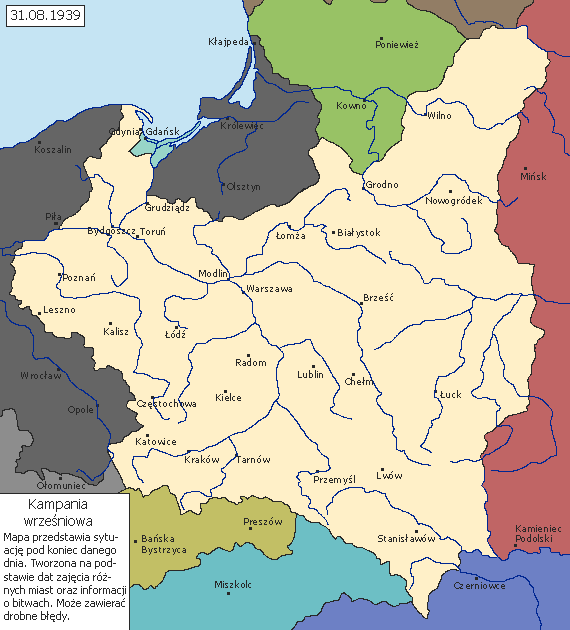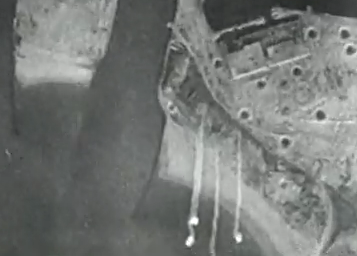|
Mat '24
The Mat '24 was a series of electric "locomotives" of the Dutch Railways. After the arrival of electric streamline units in 1935, the name of this equipment became Blokkendozen (Block Boxes), after the angular model. Some NS employees and those interested in the railway invariably spoke of "(electric) buffer equipment", to distinguish it from the streamlined, bufferless electric multiple units of the types Mat '35, Mat '36 and Mat '40. The design of this equipment in 1924 made use of the experience gained with the first electrical equipment in the Netherlands, the ZHESM equipment from 1908, which was used on the Rotterdam Hofplein - Scheveningen (Hofplein line) railway line. Characteristics The combinations were more or less fixed, formed with motor carriages and intermediate carriages, usually consisting of two motor carriages in a train circuit and two or three intermediate carriages. The motor carriages were initially equipped with a driving position on one side. To incr ... [...More Info...] [...Related Items...] OR: [Wikipedia] [Google] [Baidu] |
Electric
Electricity is the set of physical phenomena associated with the presence and motion of matter that has a property of electric charge. Electricity is related to magnetism, both being part of the phenomenon of electromagnetism, as described by Maxwell's equations. Various common phenomena are related to electricity, including lightning, static electricity, electric heating, electric discharges and many others. The presence of an electric charge, which can be either positive or negative, produces an electric field. The movement of electric charges is an electric current and produces a magnetic field. When a charge is placed in a location with a non-zero electric field, a force will act on it. The magnitude of this force is given by Coulomb's law. If the charge moves, the electric field would be doing work on the electric charge. Thus we can speak of electric potential at a certain point in space, which is equal to the work done by an external agent in carrying a unit of pos ... [...More Info...] [...Related Items...] OR: [Wikipedia] [Google] [Baidu] |
Railway Coupling
A coupling (or a coupler) is a mechanism typically placed at each end of a railway vehicle that connects them together to form a train. A variety of coupler types have been developed over the course of railway history. Key issues in their design include strength, reliability, ease of making connections and operator safety. The equipment that connects the couplings to the vehicles is the draft gear or draw gear and these must absorb the stresses of coupling and train acceleration. Nomenclature Compatible and similar couplings or couplers are frequently referred to using widely differing make, brand, or regional names, or nicknames, which can make describing standard or typical designs confusing. Dimensions and ratings noted in these articles are usually of nominal or typical components and systems, though standards and practices also vary widely with railway, region, and era. Buffers and chain The basic type of coupling on railways following the British tradition is the b ... [...More Info...] [...Related Items...] OR: [Wikipedia] [Google] [Baidu] |
Electrification
Electrification is the process of powering by electricity and, in many contexts, the introduction of such power by changing over from an earlier power source. The broad meaning of the term, such as in the history of technology, economic history, and economic development, usually applies to a region or national economy. Broadly speaking, electrification was the build-out of the electricity generation and electric power distribution systems that occurred in Britain, the United States, and other now- developed countries from the mid-1880s until around 1950 and is still in progress in rural areas in some developing countries. This included the transition in manufacturing from line shaft and belt drive using steam engines and water power to electric motors. The electrification of particular sectors of the economy is called by terms such as ''factory electrification'', ''household electrification'', '' rural electrification'', ''aviation electrification'' or ''railway electr ... [...More Info...] [...Related Items...] OR: [Wikipedia] [Google] [Baidu] |
NSM MBD 9107 Met Aanhang, Haarlem
The initialism NSM may refer to: In general culture * National Socialist Movement (other), a name used by a number of neo-Nazi organizations * New social movements, social movements which depart significantly from the conventional social movement paradigm * Non-Stipendiary Minister, an unpaid priest in the Church of England and Church of Ireland * New Socialist Movement, a political party in Gujarat that was registered in June 2007 * New Sector Movements, a music project fronted by the British musician IG Culture * Leonardo Crvenković, was once a part of NSM, now he works for GMZ In science * National Science Museum of Japan collection code * Natural semantic metalanguage * New Smoking Material, tobacco substitutes such as Cytrel * Neurogenic Stunned Myocardium (see article at NLM) In business * Nack, Schulze und Menke, a German manufacturer of jukeboxes * NASDAQ Stock Market (occasionally used three-letter abbreviation) In computing * N-ary Storage Model, a model to sto ... [...More Info...] [...Related Items...] OR: [Wikipedia] [Google] [Baidu] |
Jules
Jules is the French form of the Latin "Julius" (e.g. Jules César, the French name for Julius Caesar). It is the given name of: People with the name * Jules Aarons (1921–2008), American space physicist and photographer * Jules Abadie (1876–1953), French politician and surgeon * Jules Accorsi (born 1937), French football player and manager *Jules Adenis (1823–1900), French playwright and opera librettist * Jules Adler 1865–1952), French painter * Jules Asner (born 1968), American television personality * Jules Aimé Battandier (1848–1922), French botanist * Jules Bernard (born 2000), American basketball player * Jules Bianchi (1989–2015), French Formula One driver * Jules Breton (1827–1906), French Realist painter * Jules-André Brillant (1888–1973), Canadian entrepreneur * Jules Brunet (1838–1911), French Army general * Jules Charles-Roux (1841–1918), French businessman and politician * Jules Dewaquez (1899–1971), French footballer * Jules Marie Alphonse Ja ... [...More Info...] [...Related Items...] OR: [Wikipedia] [Google] [Baidu] |
1930s
File:1930s decade montage.png, From left, clockwise: Dorothea Lange's photo of the homeless Florence Thompson shows the effects of the Great Depression; due to extreme drought conditions, farms across the south-central United States become dry and the Dust Bowl spreads; The Empire of Japan invades China, which eventually leads to the Second Sino-Japanese War. In 1937, Japanese soldiers massacre civilians in Nanking; aviator Amelia Earhart becomes an American flight icon; German dictator Adolf Hitler and the Nazi Party attempt to establish a New Order of German hegemony in Europe, which culminates in 1939 when Germany invades Poland, leading to the outbreak of World War II. The Nazis also persecute Jews in Germany, specifically with Kristallnacht in 1938; the '' Hindenburg'' explodes over a small New Jersey airfield, causing 36 deaths and effectively ending commercial airship travel; Mohandas Gandhi walks to the Arabian Sea in the Salt March of 1930., 410px, thumb rect 1 1 17 ... [...More Info...] [...Related Items...] OR: [Wikipedia] [Google] [Baidu] |
Rotterdam
Rotterdam ( , , , lit. ''The Dam on the River Rotte'') is the second largest city and municipality in the Netherlands. It is in the province of South Holland, part of the North Sea mouth of the Rhine–Meuse–Scheldt delta, via the ''"New Meuse"'' inland shipping channel, dug to connect to the Meuse first, but now to the Rhine instead. Rotterdam's history goes back to 1270, when a dam was constructed in the Rotte. In 1340, Rotterdam was granted city rights by William IV, Count of Holland. The Rotterdam–The Hague metropolitan area, with a population of approximately 2.7 million, is the 10th-largest in the European Union and the most populous in the country. A major logistic and economic centre, Rotterdam is Europe's largest seaport. In 2020, it had a population of 651,446 and is home to over 180 nationalities. Rotterdam is known for its university, riverside setting, lively cultural life, maritime heritage and modern architecture. The near-complete destru ... [...More Info...] [...Related Items...] OR: [Wikipedia] [Google] [Baidu] |
Amsterdam
Amsterdam ( , , , lit. ''The Dam on the River Amstel'') is the Capital of the Netherlands, capital and Municipalities of the Netherlands, most populous city of the Netherlands, with The Hague being the seat of government. It has a population of 907,976 within the city proper, 1,558,755 in the City Region of Amsterdam, urban area and 2,480,394 in the Amsterdam metropolitan area, metropolitan area. Located in the Provinces of the Netherlands, Dutch province of North Holland, Amsterdam is colloquially referred to as the "Venice of the North", for its large number of canals, now designated a World Heritage Site, UNESCO World Heritage Site. Amsterdam was founded at the mouth of the Amstel River that was dammed to control flooding; the city's name derives from the Amstel dam. Originally a small fishing village in the late 12th century, Amsterdam became a major world port during the Dutch Golden Age of the 17th century, when the Netherlands was an economic powerhouse. Amsterdam is th ... [...More Info...] [...Related Items...] OR: [Wikipedia] [Google] [Baidu] |
IJmuiden
n IJ (digraph) and that should remain the only places where they are used. > IJmuiden () is a port city in the Netherlands, Dutch province of North Holland. It is the main town in the municipality of Velsen which lies mainly to the south-east. Including its large sea locks, it straddles the mouth of the North Sea Canal to Amsterdam. To the south it abuts a large reserve of plant-covered dunes, the Zuid-Kennemerland National Park. The city is on the south bank; the north bank is otherwise a steel plant and Velsen-Noord. It is north northwest of Haarlem which is due west of Amsterdam. The port is a deepwater port suited to fully laden Panamax ships, and fourth port of the Netherlands. The internal capitalization within IJmuiden is as IJ is a digraph in modern Dutch so in some typefaces recognised as a ligature which places it in one typed or handwritten space. History In the Roman era, the district was already inhabited, and archaeological finds at the impold ... [...More Info...] [...Related Items...] OR: [Wikipedia] [Google] [Baidu] |
Haarlem
Haarlem (; predecessor of ''Harlem'' in English) is a city and municipality in the Netherlands. It is the capital of the province of North Holland. Haarlem is situated at the northern edge of the Randstad, one of the most populated metropolitan areas in Europe; it is also part of the Amsterdam metropolitan area, being located about 15 km to the west of the core city of Amsterdam. Haarlem had a population of in . Haarlem was granted city status or '' stadsrechten'' in 1245, although the first city walls were not built until 1270. The modern city encompasses the former municipality of Schoten as well as parts that previously belonged to Bloemendaal and Heemstede. Apart from the city, the municipality of Haarlem also includes the western part of the village of Spaarndam. Newer sections of Spaarndam lie within the neighbouring municipality of Haarlemmermeer. Geography Haarlem is located on the river Spaarne, giving it its nickname 'Spaarnestad' (Spaarne city). It is ... [...More Info...] [...Related Items...] OR: [Wikipedia] [Google] [Baidu] |






.jpg)

